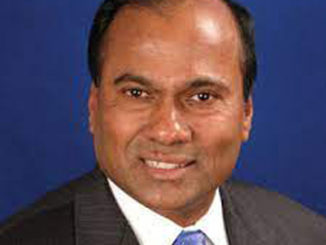
WASHINGTON (TIP): Microsoft’s board on February 4 named Hyderabad-born Satya Nadella as chief executive of the legendary tech giant that has given the world products which have become household names like Windows, Word, Excel, PowerPoint and Outlook Express.
The announcement elevates Nadella, an offspring of the Indian system, to one of the highest-profile corporate jobs globally. WASHINGTON (TIP): Microsoft’s board on February 4 named Hyderabad-born Satya Nadella as chief executive of the legendary tech giant that has given the world products which have become household names like Windows, Word, Excel, PowerPoint and Outlook Express.
The announcement elevates Nadella, an offspring of the Indian system, to one of the highest-profile corporate jobs globally. Nadella, 46, will be only the third CEO of Microsoft after founder Bill Gates and Steve Ballmer, the man he is succeeding. The elevation of Nadella, a company insider for 22 years (he recently joked that he has also been married for 22 years), was expected once heavyweight outsiders like Ford’s Alan Mulally and Nokia’s Stephen Elop dropped out or were passed up.
The names of Google‘s Sundar Pichai and Motorola’s previous CEO Sanjay Jha also briefly made the rounds, serving to highlight the intensity of PIOs breaking the glass ceiling, something that began some two decades ago, but has become more pronounced now. In picking Nadella, Microsoft directors selected both a company insider and an engineer.
It has often been noted that Microsoft was more successful under the leadership of Gates, a programmer and its first chief executive, than it was under Ballmer, who had a background in sales. Satya Nadella now finds himself the head of an icon of American business that has struggled for position in big growth markets like mobile and Internet search. The company has correctly anticipated many of the biggest changes in technology — the rise of smartphones and tablet computers, to use two examples — but it has often fumbled the execution of products developed to capitalize on those changes.
It remains to be seen whether Nadella’s technical background, along with the closer involvement of Gates in product decisions, will give the company an edge it lacked during the Ballmer years. Microsoft said in a statement that Gates will “devote more time to the company, supporting Nadella in shaping technology and product direction.” Relinquishing his role as chairman will allow Gates to spend over a third of his time with product groups at Microsoft, “substantially increasing my time at the company,” he said in a video made for the news of Nadella’s selection.
Gates said Nadella asked him to make the change in his duties at Microsoft. Nadella is a contrast to Ballmer in other ways. Most recently the executive vice president of Microsoft’s cloud and enterprise businesses, Nadella peppers his conversations and speeches with technical buzzwords that people outside the industry would most likely find impenetrable. Nadella showed ambition early in his career. He received degrees in engineering and computer science, then earned an MBA from the University of Chicago Booth School of Business while working full time at Microsoft.
He flew to Chicago from Seattle to attend classes on the weekend, according to Steven Kaplan, a professor at the school who taught Nadella in a course on entrepreneurial finance and private equity. “He is take charge, smart, but in a likable way,” Kaplan said, adding that Nadella received an A in the course. While many executives within Microsoft tend to be polarizing figures, Nadella appears to be well liked in much of the company.
Still, those who know him well say he is not a pushover as a boss. Nadella’s star at Microsoft rose considerably in the past several years as he took charge of the company’s cloud computing efforts, a business considered vital as more business customers choose to rent applications and other programs in far-off data centers rather than run software themselves. For years, Microsoft did not pay enough attention to how the cloud was attracting the creativity of a new generation of developers. When he got control of the division that included Microsoft’s cloud initiatives, Nadella changed that.
He began meeting with start-ups to hear more about what Microsoft needed to do to become more responsive to their needs. “When you look at the most exciting things happening in tech, all the platform shifts happening and disruption — social, mobile, cloud — Microsoft has not even been part of the conversation until recently,” said Brad Silverberg, a Seattle-area investor and a former Microsoft executive. “With Satya’s leadership, Microsoft is doing interesting things in cloud.” But Nadella has to grapple with a much broader set of challenges in markets in which he has little experience, like mobile devices.
He inherits a deal to acquire Nokia’s mobile handset business, along with 33,000 employees, and a wideranging reorganization plan devised by Ballmer and still in progress. In an interview in July, Nadella was supportive of the reorganization plan, which he predicted would allow Microsoft to adapt to changes in the market more quickly than in the past. “It’s not like our old structure didn’t allow us to do some of this,” he said. “The question is whether you can amplify.”






Be the first to comment